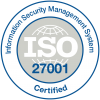We are introducing platform governance to define upper limit values to compel citizen developers to build applications in an optimized manner by adhering to these limits, which are derived based on historical data, implementations using best-practices vs bad implementations, observations from poor performance applications, high throughput (I/O), and more.
The following are a few advantages of this cap:
- Citizens are now obligated to develop applications / solutions in the best possible design while adhering to the upper limit to fulfill the business use-case.
- Because the CD produces optimal designed solutions, it reduces compute overload and improves speed.
- Citizen Developers are obligated to break down processes into smaller and more scalable components, such as micro applications (best practice), rather than building a monolith (Not a best-practice).
Feature Type
1. Apps
An organization can create a maximum of 2000 apps and has limitations on the sub-components creation in an app, as given below.
| S.no | Types of Limit | Limitation |
|---|---|---|
| 1 | Sections in App | 50 |
| 2 | Form Fields in each App-Section | 100 |
| 3 | Form Fields in each App- Grid | 50 |
| 4 | Business Rules in an App | 500 |
| 5 | Validation in an App | 500 |
| 6 | Conditions in each business rule | 30 |
| 7 | Actions for each business rule | 30 |
| 8 | Validation for each business rule | 20 |
| 9 | Workflow Steps in an App | 100 |
| 10 | Workflow Step - Actions (Each step) | 10 |
| 11 | App Data function in an App | 200 |
| 12 | App Data functions per workflow step | 40 |
| 13 | Triggers in an App | 200 |
| 14 | Triggers for each workflow step | 20 |
| 15 | User functions in an App | 10 |
| 16 | Notifications in an App | 100 |
| 17 | Notifications for each Workflow step | 10 |
| 18 | External API in an App | 100 |
| 19 | External API for each Workflow step | 10 |
| 20 | Quick flows in an App | 100 |
| 21 | Quick flows for each Workflow step | 10 |
| 22 | App reports in an App | 50 |
2. Workspaces
An organization can create a maximum of 100 workspaces.
3. Data tables
An organization can create a maximum of 2000 data tables and has limitations on the sub-components creation in a data table, as given below.
| S.no | Types of Limit | Limitation |
|---|---|---|
| 1 | Data function in each Data table | 50 |
| 2 | Fields in each Data table | 200 |
4. Data sources
An organization can create a maximum of 1000 data sources and has the following limitations.
| S.no | Types of Limit | Limitation |
|---|---|---|
| 1 | Data tables in each Data source | 20 |
| 2 | Data fields permitted in each Data source (Selected elements) | 150 |
5. Reports
An organization can create a maximum of 3000 reports (cumulative) and has limitations on the sub-components creation in a report, as given below.
| S.no | Types of Limit | Limitation |
|---|---|---|
| 1 | Permitted data field in each report | 100 |
| 2 | Custom views in each report | 30 |
6. Views (List screen)
An organization can create a maximum of 3000 views and has limitations on the sub-components creation in a view, as given below.
| S.no | Types of Limit | Limitation |
|---|---|---|
| 1 | Permitted data field in each view | 100 |
| 2 | Permitted "Actions" in each view | 50 |
| 3 | Custom views in each view | 30 |
7. Users
An organization can create a maximum of 500000 users and can add a maximum of 10 custom user fields for each user to capture additional data.
8. Add-ons
An organization can create a maximum of 50 Add-ons and can add a maximum of 50 Static fields in each Add-on.
9. Dashboards
An organization can create a maximum of 30 dashboards per user and each dashboard can contain a maximum of 30 dashlets.
10. Lookups
An organization can create a maximum of 1000 lookups and each lookup can contain a maximum of 500 values.
11. Roles
An organization can create a maximum of 500 roles and each user can have a maximum of 500 roles.
.png)






